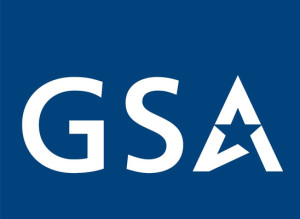
IT COST report is ‘decision engine’ for federal CIOs
The IT COST Commission Report lays out 21 recommendations for agency CIOs to help them classify, compare and prioritize spending when it comes to the acquisition of...
The Commission on IT Cost, Opportunity, Strategy and Transparency (COST) unveiled what could be a “decision engine” for agency chief information officers.
The report offers 21 recommendations for federal CIOs and department leaders to help curb spending on IT operations and maintenance, and focus resources on developing and modernizing of government systems.
The recommendations, according to the report, incorporate Technology Business Management (TBM), which is based on transparency of costs, consumption and performance.
“If done right, [TBM is] a decision engine that allows you to flip levers on potential investments and say if we do this, if we make this investment, here’s going to be the business outcome,” said General Services Administration CIO David Shive, during a July 21 event at GSA in Washington. “If we don’t make this investment, which is a decision in and of itself, here’s what the business outcome is going to be. Do that for every single investment across the investment portfolio, and you start to sense trends, and you can make good forward-looking decisions.”
The report’s number one recommendation: Agency CIOs should adopt the standard TBM taxonomy for budgeting (planning) and reporting IT expenditures and for driving consistency across stakeholder groups.
“Taxonomy is critical because it develops that generally accepted procedures in the way costs should be structured and the way that you actually communicate with programs and missions and directors,” said Chris Pick, president of the TBM Council.
The IT COST Commission is a part of the council, a non-profit organization comprised of private sector IT leaders.
Pick highlighted the establishment of a transparency and governing office within each agency, and a “governmentwide governance board” to ensure the adoption and following of TBM practices, as two other priority recommendations.
“The office is really important,” Pick said. “This is going to begin the process of maturing the ability to run IT like a business. That office and the people really have to step in, and of course if you can’t pull people together it’s going to be very difficult to actually benchmark and show success across the entire government.”
The 21 recommendations cover five categories:
- TBM taxonomy and metrics
- Financial accounting and reporting
- Governance and standards
- Organizational capabilities
- Functional capabilities
Transportation CIO Richard McKinney said the IT COST report dovetails nicely with the Federal Information Technology Acquisition Reform Act (FITARA), and creates a “perfect storm.”
Chat with Jonathan Alboum, USDA CIO, July 26 at 2 p.m. Sign up here.
“The clear intent of FITARA is hey, CIOs, get it together; hey, CIOs, be responsible for your spend,” McKinney said. “I think this is our last chance to get it right. At least I want to behave like it is. I want to conduct myself like you won’t get another bite at this apple. If you can’t make FITARA and this [COST commission report] successful, they’ll find somebody else, or things will get radically more difficult with the Hill. Having testified in front of House Oversight, the patience is thin, and I don’t say that in a critical way, my patience is a little thin.”
McKinney said that dwindling patience and sense of urgency is only driven further by the impending transition.
McKinney said he is writing his successor a letter and will include the importance of TBM, in the hope “they’ll see that this is worth continuing and pursuing.”
Being a political appointee is a double-edged sword he added. While he gets to be a part of high level meetings, McKinney said, he also has “a shelf life.”
Shive said because the report is so new, a formal structure going forward will have to be figured out, but in the meantime, he anticipated a “community of practice.”
Copyright © 2025 Federal News Network. All rights reserved. This website is not intended for users located within the European Economic Area.
Related Stories

GSA proposes change to acquisition regulation vendors loathe




